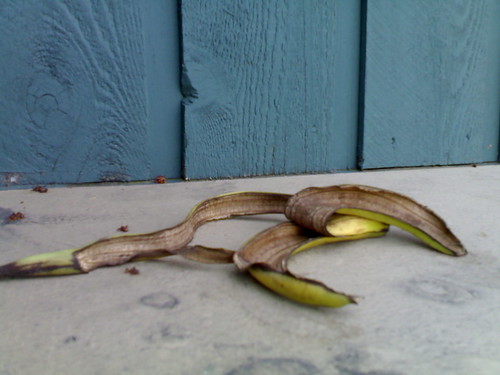
So the Useful Links page using Social Bookmarking was finally finished. Or so I thought. The idea was fairly simple: use a Social Bookmarking tool to allow users to tag web sites to add to the library's "Useful Links" page. The information flow basically happens like this:
1) User finds useful website.
2) User bookmarks web site in social bookmarking application using library tag.
3) Social bookmarking application adds bookmark to feed (in this case ATOM).
4) Magpie RSS aggregates feeds and parses them to html.
5) Library web site displays links on "Useful Resources" page.
In practice though, I came across a few problems so I thought now might be a good time to highlight some of the pitfalls and document my solution!
Pitfall #1 - The Accidental Tag
In my case, I came up with about 10 different tags to allow the Useful Resources to be sorted into categories (e.g. Databases, Libraries etc). Each category has its own distinctive tag (e.g. hurlibdat, hurliblib). The tags have to be fairly unique as otherwise you'd end up with a load of stuff you don't really want.
Say for example you used a generic tag like 'magazine'. It's not beyond the realms of imagination that sooner or later somebody would tag the Playboy website with 'magazine' and it would end up on your useful resources page. They probably weren't intending to introduce soft porn to your library users but the effect is the same.
Lesson #1 - Library link to Playboy Magazine = Grumpy users and complaints! Use tags that nobody is likely to accidentally tag items with!
But what if it's no accident? This brings me to...
Pitfall #2 - Intentional vandalism
Ok so it's not very 'Web2.0' what with extreme trust and all that, but if you're putting your name to a page you have to be able to ensure that the links on it are of a certain quality. So what can you do to stop people intentionally tagging inappropriate content? Well, nothing really. What you can do is set out guidance on what resources are appropriate and point out the fact that, in social bookmarking, everybody knows who's tagged what - if you vandalise there will be comeback!
Lesson #2 - Give users clear guidance on how to tag and which kinds of resources are appropriate.
I actually found a very similar site on our Intranet and revised the guidance for the library page.
Despite this it occurred to me that, if someone really wants to add inappropriate links, there is really very little I can do to stop them. Or is there? More on that later!
Pitfall #3 - How to fix broken links
This one only occurred to me after I finished the page and discovered, to my horror, that one of the linked sites had already vanished. So. I found a new link for the site and edited my bookmark in the social bookmarking tool to point to fix the link. Then it hit me. How can I fix broken links from users when I can't edit their bookmarks? ACK!
The Solution to ALL My Problems...
...is actually very simple. Moderation. Although I was initially against this I've come to the conclusion that, to avoid a page full of broken links six months down the line I need to own the bookmarks that feed the useful links page.
The mechanism to do this had me stumped for a while but the solution is actually fairly easy.
I need to create one tag for users to bookmark sites they think will be useful to the library. I monitor the feed for that tag and create my own bookmark (using a different tag) any time a user tags a new page. The Useful Resources page aggregates my tags rather than the users', allowing me to moderate and organise the content.
This actually improves all three problems.
For pitfall #1, the tags that I use can be so obscure that nobody could possibly add resources by accident. Also, just having one simple tag for library users is alot easier for them - they don't have to categorize the resource or remember 10 different, obscure tags for different categories.
For pitfall #2 - I'm now able to filter out any sites that aren't appropriate just by not bookmarking them!
For pitfall #3 - I own the bookmarks feeding the Useful Links page so I'll be able to edit or delete broken links. This should be really easy, just schedule in a review of the page every six months or so and edit the bookmarks of any broken links.
Shimple! If only I'd of thought of it sooner. Ah well, we live and learn and at least it shouldn't be too hard to fix.


No comments:
Post a Comment